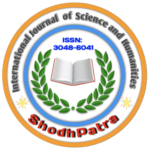This journal has a strong plagiarism detection system. Advanced software checks submitted articles for similarities against a large database of sources. The editing staff also ensures citation and coherence. Authors must claim originality and credit sources. These steps protect the journal’s academic integrity and intellectual reputation.
When completing the article’s copyright transfer agreement, submitting authors must recognize ShodhPatra: International Journal of Science and Humanities‘s plagiarism and copyright policies. We review manuscripts that properly cite unpublished data and obtain permission.
Copying ideas, writing, data, and other creative work (e.g., tables, figures, and graphs) and presenting it as an original study without citation is plagiarism. Authors must obtain permission from the copyright holder (usually not the author) to reproduce previously published material, even if it is properly credited.
Plagiarism is taking ideas from previous work, whether in words, tables, or images. Additional word-for-word copying must be discovered. You should quote or italicize smaller parts (a few words to one or two sentences) and indent larger segments (paragraphs). In both situations, a URL or other citation must follow the cited work. Casual sentences without unique content are exempt. With permission from the copyright owners, one can duplicate their own work word-for-word, but the article must state this. Working papers and theses produced for research are exempt. If a whole portion is copied,.
Ideas require attribution, even in double-blind journals. If the publication employs double-blind review, authors should acknowledge relevant work, including their own. In order to avoid circumventing the double blind process, authors should include a “blinded” citation in the manuscript and explain to the journal’s editor how it will be changed if the paper is accepted.
This guideline seeks transparency so the editorial staff may understand what is unique and original and how much the paper relies on others or the authors. If you’re unsure how to credit material presented elsewhere (such as a parallel publication under review or a conference proceeding), write a cover letter to the editor.
